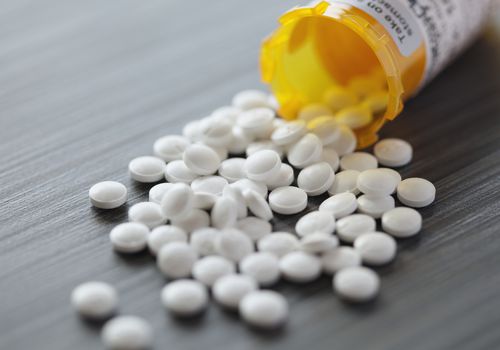The terms drug addict and drug addiction often elicit derogatory images of individuals snorting cocaine in the back room of a club or shooting up heroin in a dark alley somewhere. However, the real picture is much more comprehensive. In many cases, it doesn’t involve street drugs, clandestine meetings, or young adults with questionable morals and too much time on their hands. Quite the opposite, actually.
With more and more people desperately seeking quick relief from common ailments like anxiety, pain, and exhaustion, prescription drug addiction is reaching epidemic proportions. Granted, some who are addicted to these drugs abuse them for recreational purposes. But many started out taking them for legitimate reasons, only to find themselves becoming completely dependent on them. They are not partiers, delinquents, or felons. They are not hanging out in clubs and dark alleys. Rather, they are often just regular, nice, respectable folks, your next-door neighbor, the deacon at your church, or the CEO of a company. Looking for the Over the Counter closest thing to Adderall? Find out from a doctor what are some of the best OTC options available to you.
While most prescription medications are not potentially addictive, far too many are. It is important to know which ones have a particularly high potential, especially if you are already taking them or are considering doing so. It is easy to assume, “I would never become addicted.” But it happens more often and more readily than many realize, and sadly, that realization usually comes too late.
Prescription stimulants are most frequently prescribed for two things: ADD / ADHD (attention deficit disorder/attention deficit hyperactivity disorder) and narcolepsy. ADD, and ADHD affects millions of children and adults, and medication can be very beneficial in terms of helping to control and alleviate symptoms. Narcolepsy is a sleep disorder in which sleep-wake cycles are significantly disturbed. Approximately 1 out of every 2000 Americans suffer from it.
Stimulants are especially ripe for abuse and addiction. They stimulate the central nervous system, increasing energy levels, the ability to focus, and alertness. These properties make them especially appealing to individuals such as exhausted parents, shift workers, and college students during exam time. Some people also take them due to their belief that they’ll enhance their ability to learn.
Methylphenidate (Ritalin, Concerta)
This drug is widely prescribed for ADHD and ADD. In some cases, doctors also prescribe it “off-label” for other problems, including symptoms of depression, fatigue, and obesity. Unfortunately, even at normal doses, methylphenidate and similar stimulant medications can be very dangerous – and even lethal – for individuals with certain types of heart conditions. It can have serious side effects. For example, it can trigger mania, psychotic symptoms, suicidal thoughts, and aggression in some who take it. It can also be dangerous when taken in high doses, combined with certain medications, or combined with alcohol.
Amphetamine / Dextroamphetamine (Adderall, Dexedrine)
Medications in this category are very similar to methylphenidate. They are most commonly prescribed for ADD, ADHD, and narcolepsy. Adderall is comprised of amphetamine and mixed dextroamphetamine salts, while Dexedrine is the brand name for dextroamphetamine sulfate. Like Ritalin and Concerta, these two medications help increase wakefulness, energy, and alertness. Side effects, even at recommended levels, can include psychotic symptoms, mania, and aggressive behavior. They can also exacerbate agitation and feelings of anxiety. Stimulant medications can produce euphoria when used recreationally.
These medications should not be combined with other drugs, alcohol, certain medications, or taken in higher doses than prescribed.
Stimulant Withdrawal
Withdrawal symptoms can occur if prescription stimulants are discontinued suddenly after long-term use and dependence. These may include extreme fatigue, shakiness, and paranoia.



